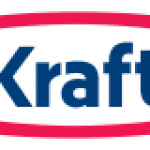Manufacturing Optimization during Large Facility Move for Kraft Foods to Achieve Plant Efficiency
August 17, 2012

Manufacturing Business Process Optimization to Achieve Smooth Plant Closing and Increase Production Efficiency
The Project
Due to manufacturing considerations, Kraft made a business decision to close its LifeSavers production facility in Holland, Michigan and move the entire operations to the company’s Mount Royal, Quebec facility. It would take more than simple packing and unpacking to make the transition a success. Grantek would help to ensure that the move of production capabilities would also be a move with the times.
The Opportunity – Manufacturing Data Captured to Ensure Successful Transition
Shifting these complex manufacturing processes from one country to another presented both challenges and opportunities for Kraft and the Grantek team. Grantek would need to send a multi-disciplined team to Michigan into a difficult plant-closing environment to ensure that all system data was gathered and systems were decommissioned for efficient redeployment.
The task would be complicated by the need to maintain production capacities during the move to continue to meet market demands, requiring that the move take place in stages. At the other end of the move there would be new electrical and safety codes to meet, a new language to incorporate, and a new opportunity to increase plant efficiency.
Grantek’s Solution to Achieve Operational Excellence
Grantek engineers prepared for the move by familiarizing themselves with and documenting the current systems at the Michigan plant. There would be two main LifeSavers manufacturing processes to move: the mints process and the hard candy process.
While most of the existing hard candy equipment would be brought into the new plant, Grantek discovered that the company had no process documentation to support it. Through in-depth research, Grantek took on the daunting task of deconstructing the entire production process to understand the dynamics that would need to be brought forward, and then reconstructing these processes in new control systems.
Documenting the many manual steps in the process allowed Grantek to identify opportunities to automate manufacturing, and led to the creation of standard operating procedures that would guide the plant going forward.
Grantek also recreated the entire mint production process with new equipment at the Quebec plant, while incorporating a new material handling process that linked candy production to packaging.
Each process involved several packaging lines. In many cases, legacy systems had to be upgraded to meet corporate standards and new manufacturing industry safety standards. Operational manuals, operator interfaces and all documentation was prepared in both English and French.
Wherever possible, standardization was brought to manufacturing technologies, processes and methodologies. In the end, Grantek delivered manufacturing optimization in a highly integrated and automated manufacturing systems solution that led to a significant increase in plant efficiency and brought about additional cost savings through staff reduction.
